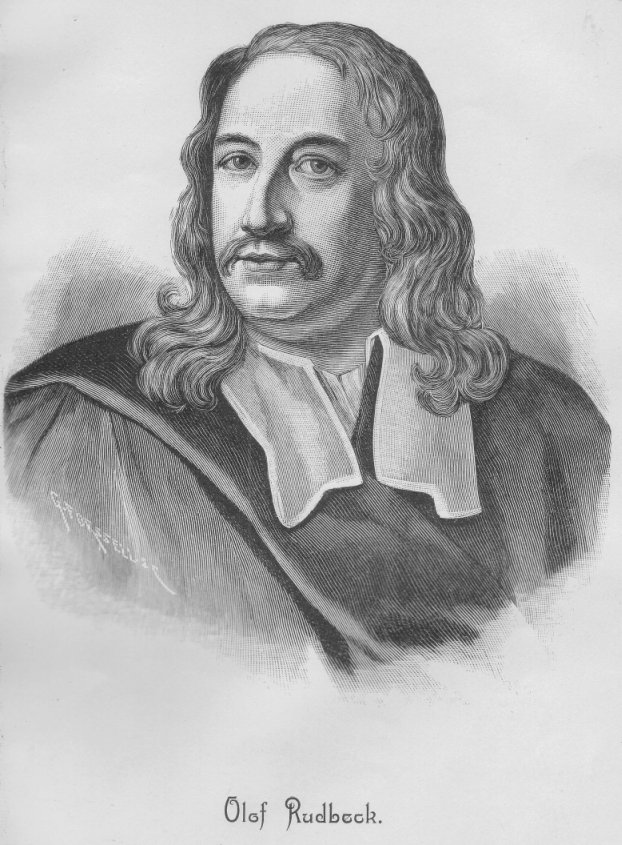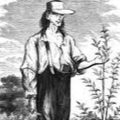Olaus Rudbeck
Renaissance Man
Today is the anniversary of the death of Olaus Rudbeck, who died on this day in 1702.
Olaus Rudbeck was born in Sweden. He was a "Renaissance man." He contributed to medicine, especially anatomy. Rudbeck was a professor at the University of Uppsala, where he taught medicine, botany, mathematics, astronomy, and architecture. One of his most important discoveries came when he was just 22 years old; Rudbeck discovered the lymphatic vessels and the lymphatic system in 1650.
1702 will forever be remembered in Swedish history as the year Upsala burned. The fire swept through the town, and it made its way to the University. Rudbeck was 72 years old, and he ran to the top of the theater, where he taught anatomy to direct the firemen and people trying to save the campus. He reportedly could be heard even over the din of the chaos. While he was leading activities at the University, he was informed that his own home and his private personal collections and writings were on fire. Rudbeck did not leave his post. Thanks to Rudbeck, the University Library, and valuable collections were saved. Walking through the town of Upsala, which lay in ruin, Rudbeck immediately began to draw up plans for the city. His vision was carried out without him, though. Rudbeck died four months later on this day in 1702.
Twenty-nine years later, Carl Linnaeus, the ‘Father of Plant Taxonomy,' named the Rudbeckia, or Black-Eyed Susan, after his patron Olaus Rudbeck. On July 29, 1731, Linnaeus wrote with admiration about his old professor, Rudbeck, saying:
"So long as the earth shall survive and as each spring shall see it covered with flowers, the Rudbeckia will preserve your glorious name."
Black-Eyed Susans are a favorite of gardeners. They bloom continuously from about mid-July until the first frost. The black-eyed Susan is a great pollinator plant. As a member of the daisy family, they offer that daisy shape and give the garden a warm yellow color. All that Black-Eyed Susans require is the sun. All gardeners need to do is enjoy them and remember to cut a few to bring indoors; they are a fantastic cut flower. They play nice in bouquets, and they look great as a solo flower in a vase.
There have been new varieties of Black-Eyed Susans introduced over the past couple of decades. In honor of the 150th anniversary of the city of Denver, the Denver Daisy was introduced in 2008. It is a cross between the Rudbeckia hirta species and the Rudbeckia prairie sun.
One of my personal favorites is the Rudbeckia hirta 'Cherry brandy.' Imagine a red Black-Eyed Susan, and that's basically Cherry brandy. Simply gorgeous.
When I was researching Olaus Rudbeck, I ran across two fascinating stories about him from a biographical piece by a woman named Frederica Rowan. I share the first one now, and I'll tell you the other at the end of the show.
Here we go.
Olaus Rudbeck, the man honored with the Black-Eyed Susan, apparently had the voice of an angel. He also had great taste, and he knew how to through a party. So, in 1660, he was put in charge of pulling together the coronation of Charles XI of Sweden where it was reported,
"That at a concert given in honor of the coronation of Charles XI (of Sweden), his voice was distinctly heard in a solo air "above the accompaniment of twelve trumpeters, all blowing with their whole might ;" and that on another occasion, when already advanced in life, he imitated the sound of cannon with his mouth, to the great delight of the future hero, Charles XII, then a boy of seven years, who clapped his hands with joy."
This post was featured onThe Daily Gardener podcast:
helping gardeners find their roots,
one story at a time






